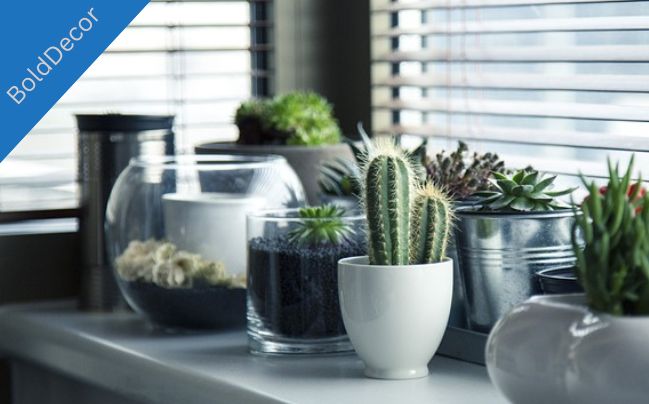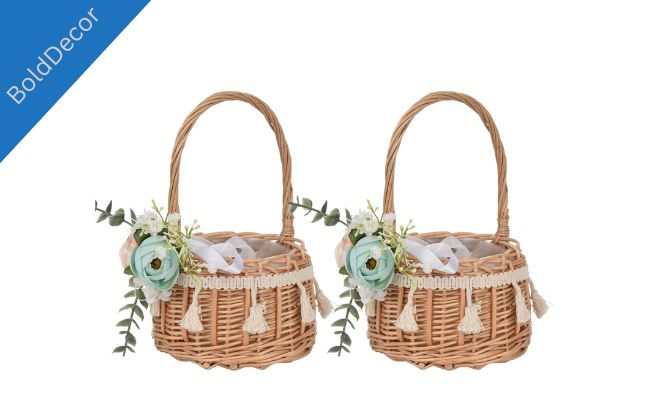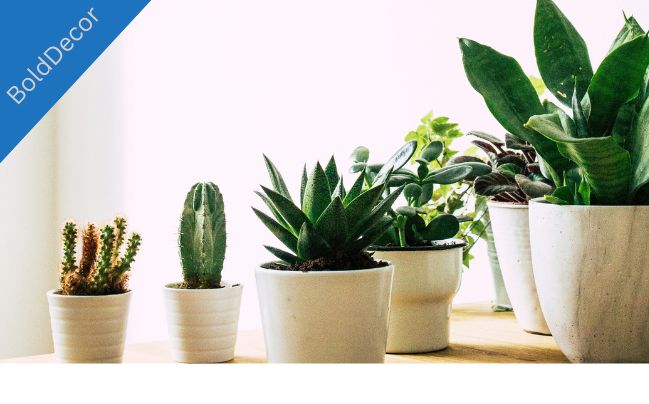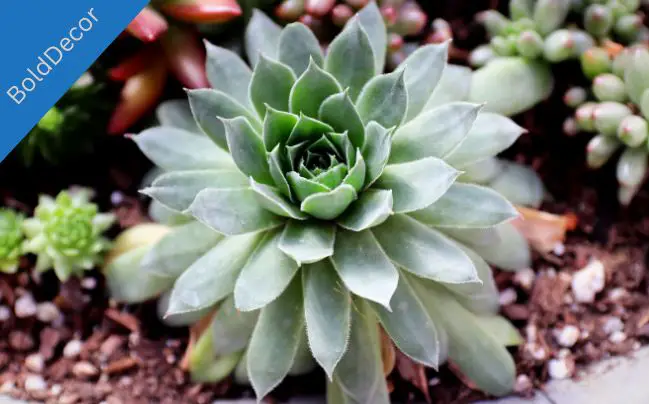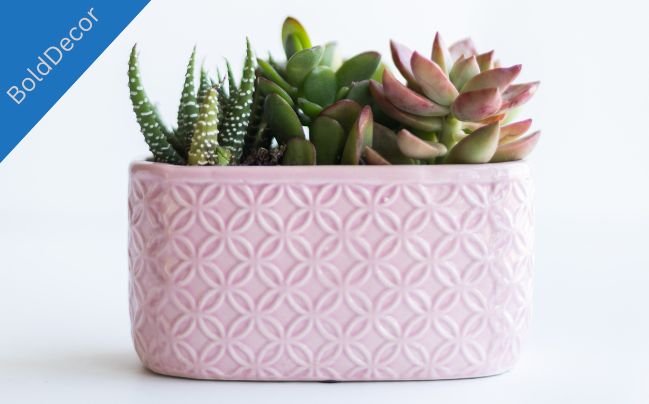If you’re new to indoor gardening or simply don’t have a green thumb, choosing the right houseplants can be overwhelming. But with the best houseplants for beginners, you can green your space without the stress of high maintenance plants.
In this comprehensive guide, I’ll walk you through the ideal houseplants that require minimal effort and thrive in various indoor environments.
Key Takeaways
- Best houseplants for beginners are easy to care for and low maintenance indoor plants.
- Choosing beginner-friendly houseplants can bring nature into your space without feeling overwhelmed.
Table of Contents
Understanding the Benefits of Indoor Plants
As a beginner in indoor gardening, you might wonder why you should bother with houseplants. The truth is, adding greenery to your living space has numerous benefits that go beyond just aesthetics. Here are some reasons why you should consider incorporating plants into your home:
- Plants improve air quality by filtering out pollutants and increasing oxygen levels.
- They can reduce stress levels and promote relaxation, helping you to feel more calm and centered.
- Indoor plants can boost your mood and mental health, providing a sense of purpose and connection to nature.
- They can also increase productivity and creativity, enhancing your overall well-being.
Now that you understand the benefits of indoor plants, it’s time to find the perfect houseplants for beginners. Whether you’re looking for low-maintenance options or plants that can thrive in various conditions, there are several ideal houseplants for beginners to choose from.
Choosing the Right Indoor Plants for Your Space
When it comes to selecting indoor plants, beginners must pay close attention to their space’s condition to ensure that their plants thrive. Before choosing a plant, consider the lighting, humidity, and temperature of your space, as well as the size and placement of the plant. Some easy-to-care-for plants, such as snake plants and ZZ plants, can tolerate low-light conditions, while others, such as peace lilies and aloe vera plants, require more natural light.
For those new to indoor gardening, it’s best to start with simple indoor plants for beginners that are low maintenance and require minimal attention. Here are some top houseplants for beginners that you can consider:
| Plant Name | Lighting Needs | Watering Needs | Difficulty Level |
|---|---|---|---|
| Snake Plant | Low to bright light | Allow soil to dry out between watering | Easy |
| Pothos | Low to bright light | Allow soil to dry out between watering | Easy |
| Spider Plant | Bright, indirect light | Keep soil evenly moist | Easy |
| ZZ Plant | Low to bright light | Allow soil to dry out between watering | Easy |
| Peace Lily | Low to bright light | Keep soil evenly moist | Moderate |
| Aloe Vera | Bright, indirect light | Allow soil to dry out between watering | Easy |
| Jade Plant | Bright light | Allow soil to dry out between watering | Easy |
Keep in mind that every plant is unique and may have slightly different care requirements. It’s crucial to research each plant’s specific needs and adjust your care routine accordingly. Over time, you’ll develop the skills and intuition necessary to care for a variety of indoor plants, so don’t be afraid to experiment and try new species as you gain more experience.
Snake Plant (Sansevieria)
When it comes to easy-to-care for houseplants, the snake plant tops the list as one of the best beginner-friendly indoor plants. This versatile and hardy plant is perfect for those who are new to indoor gardening or do not have much time to care for their plants.
The snake plant is known for its resilience and ability to tolerate low light conditions, making it an ideal choice for beginner houseplants. This plant can grow in a range of light conditions from bright light to almost complete darkness. It is also tolerant of a wide range of temperatures, making it a great choice for any indoor environment.
The snake plant has striking tall upright leaves that come in a variety of patterns and colors. One of the unique features of this plant is that it is one of the few plants that convert CO2 into oxygen at night, making it a great plant for the bedroom. Furthermore, it is also an air-purifying plant, filtering out toxins such as formaldehyde, xylene, and benzene from the air.
Snake Plant Care Tips
Caring for the snake plant is simple, making it an excellent choice for beginner houseplants. Here are some tips for caring for your snake plant:
| Light | Watering | Soil |
|---|---|---|
| Can tolerate low light conditions but thrives in bright, indirect light. | Allow the soil to dry out between waterings. Over-watering can cause root rot. Water less in winter months. | Use a well-draining potting mix. |
The snake plant is a low maintenance indoor plant that can add a touch of elegance to any indoor environment. With its easy care requirements and air-purifying qualities, the snake plant is a perfect choice for beginner-friendly houseplants.
So, if you’re looking for a beginner houseplant that is easy to care for, look no further than the snake plant. Its unique qualities and impressive features make it an excellent choice for those who want to add some greenery to their indoor space.
Pothos (Epipremnum aureum)
If you’re looking for a low maintenance indoor plant that is also beginner-friendly, look no further than the pothos. This versatile plant is known for its trailing vines and vibrant leaves, making it a perfect addition to any indoor space.
One of the best things about pothos is how adaptable it is to various lighting conditions. It can thrive in low to bright indirect light, making it an excellent option for those with limited natural light in their homes. Additionally, pothos is a forgiving plant that can tolerate some neglect, making it perfect for beginners who may not have the time or experience to devote to more high-maintenance plants.
Care Tips for Pothos
Despite its easy-going nature, pothos still requires basic care to thrive. Here are some tips for keeping your pothos healthy and happy:
- Watering: Pothos prefers moist (but not overly wet) soil. Water your plant when the top inch of soil feels dry to the touch.
- Light: As mentioned, pothos can tolerate a variety of lighting conditions. However, it will grow best in bright, indirect light.
- Soil: Use a well-draining potting mix when repotting your pothos.
- Temperature: Pothos prefers temperatures between 65-85°F.
- Pruning: Regular pruning will encourage your pothos to grow fuller and bushier.
With minimal effort, pothos can add a pop of color and life to your indoor space while requiring little maintenance. It’s the perfect plant for beginners looking to dip their toes into the world of indoor gardening.
Spider Plant (Chlorophytum comosum)
When it comes to easy-to-care for houseplants, the spider plant is a top choice for beginners. Its ability to tolerate neglect and its air-purifying qualities make it a beginner-friendly indoor plant that can thrive in various conditions.
The spider plant has unique characteristics that make it stand out from other houseplants. It is a fast grower and can quickly produce new shoots, making it a perfect plant for propagation and easy to share with others. The plant also produces small white flowers that can enhance the beauty of your space.
Spider Plant Care Tips
The spider plant is a low maintenance indoor plant that requires minimal care, making it ideal for those new to indoor gardening. Here are some tips to ensure your spider plant thrives:
| Lighting | The spider plant can thrive in a range of lighting conditions, from bright and indirect to low light. It is best to avoid direct sunlight, which can scorch the leaves. |
|---|---|
| Watering | The spider plant prefers well-draining soil and can tolerate periods of drought. Allow the top inch of soil to dry out before watering the plant. |
| Temperature and Humidity | The spider plant prefers temperatures between 60-75 degrees Fahrenheit and can tolerate average indoor humidity levels. |
| Fertilizing | The spider plant can benefit from occasional fertilizing during the growing season (spring and summer). Use a balanced, water-soluble fertilizer once a month. |
With these care tips and the spider plant’s resilience, even beginner gardeners can enjoy the benefits of indoor gardening with ease. Add this beginner-friendly indoor plant to your collection and enjoy its unique qualities and air-purifying benefits.
ZZ Plant (Zamioculcas zamiifolia)
Looking for the perfect houseplants for beginners that are easy to care for? Look no further than the ZZ plant (Zamioculcas zamiifolia). This low-maintenance indoor plant is adaptable to various light conditions, making it a great choice for those new to indoor gardening.
The ZZ plant has glossy, dark green leaves that add an elegant touch to any room. Not only is it visually appealing, but it also helps purify the air, making it a functional addition to your space.
Caring for the ZZ plant is simple and straightforward. It requires minimal watering and can tolerate neglect, making it ideal for those who can’t dedicate too much time to plant care. With proper care, the ZZ plant can grow up to three feet tall, creating a striking presence in your indoor garden.
Overall, the ZZ plant is an ideal choice for beginner houseplants, perfect houseplants for beginners, and those looking for easy-to-care-for houseplants. Its resilience and adaptability make it an excellent addition to any indoor garden.
Peace Lily (Spathiphyllum)
When it comes to beginner houseplants, peace lilies are at the top of the list. These easy to care for houseplants are perfect for those new to indoor gardening, as they require minimal maintenance and can thrive in low light conditions.
One of the benefits of peace lilies is their air-purifying qualities, making them an ideal choice for those who want to improve the air quality of their home. Additionally, these beginner-friendly houseplants are known for their ability to reduce stress levels, making them perfect for anyone looking to create a calming environment.
| Lighting Requirements | Watering Requirements | Special Characteristics |
|---|---|---|
| Low to medium light | Allow the soil to dry slightly between watering | Elegant white blooms and glossy foliage |
Peace lilies are low maintenance indoor plants that do not require frequent watering or pruning. However, it’s essential to ensure that they are not overwatered, as this can lead to root rot.
Overall, peace lilies are an excellent choice for beginner houseplants as they are easy to care for and provide numerous benefits for indoor environments. Whether you’re looking to improve air quality or create a calming atmosphere, peace lilies are a perfect addition to any indoor garden.
Snake Plant (Sansevieria)
Let’s take another look at the snake plant, one of the perfect houseplants for beginners. This sturdy plant is ideal for those who may not have the greenest of thumbs or those who are just starting in indoor gardening. Its adaptability and low-maintenance nature make it an excellent choice for any space.
| Lighting | Watering | Soil |
|---|---|---|
| Thrives in low to bright light conditions | Water only when soil is dry to the touch | Well-draining potting mix |
The snake plant is also known for its air-purifying qualities, making it a popular choice for bedrooms and other areas where air quality is crucial. One of the unique features of this plant is its ability to convert carbon dioxide into oxygen at night, making it an excellent choice for those who suffer from allergies or sleep apnea.
Overall, the snake plant is an ideal choice for beginners due to its resilience and impressive ability to thrive in various lighting conditions. Whether you’re looking for a low-maintenance indoor plant or a way to purify the air in your space, the snake plant is an excellent choice for a beginner-friendly houseplant.
Aloe Vera: The Perfect Beginner-Friendly Houseplant
One of the easiest indoor plants to care for is the Aloe Vera plant. This succulent is not only visually appealing, but it also has medicinal properties that make it a popular choice for health enthusiasts.
Aloe Vera is perfect for those who want a low-maintenance indoor plant that requires minimal attention. It is a self-sufficient plant that can thrive in various lighting conditions, making it a perfect choice for beginners who don’t have a lot of experience with indoor gardening.
Care Tips
Aloe Vera requires minimal watering and can be left alone for a few weeks without harm. It needs a lot of bright, indirect sunlight and should be placed near a window or in a well-lit room.
When it comes to soil, Aloe Vera prefers well-draining soil that allows water to flow through quickly. It is important to ensure that the pot has drainage holes to avoid overwatering, which can cause the roots to rot.
One of the great things about Aloe Vera is that it doesn’t require any fertilization. The plant thrives with the nutrients it gets from the soil, and adding extra fertilizer can actually harm the plant.
Medicinal Properties
Aloe Vera is not only a beautiful addition to any indoor space, but it also has various medicinal properties. The gel inside the plant’s leaves can be used to treat sunburns, cuts, and other minor skin irritations.
Additionally, Aloe Vera is known for its air-purifying qualities, making it an excellent choice for those who want to improve the air quality of their home.
Final Thoughts
Aloe Vera is a perfect beginner-friendly indoor plant that is easy to care for and has numerous benefits. It is visually appealing, self-sufficient, and has medicinal properties that make it a popular choice for those who want to incorporate nature into their homes.
Jade Plant (Crassula ovata)
If you’re searching for a low maintenance, beginner-friendly houseplant, look no further than the jade plant. This resilient succulent is a perfect choice for those who want an aesthetically pleasing plant that requires minimal care and attention. With its thick, fleshy leaves and unique appearance, the jade plant will add a touch of elegance to any indoor space.
| Lighting: | The jade plant prefers bright, indirect light but can tolerate low light conditions. |
|---|---|
| Watering: | Allow the soil to dry out completely before watering. Over-watering can lead to root rot. |
| Humidity: | The jade plant does not require high levels of humidity. |
| Temperature: | The jade plant can tolerate a wide range of temperatures but prefers warmer climates. |
One of the benefits of the jade plant is its ability to purify the air, removing toxins such as benzene and formaldehyde. This succulent is also known in Feng Shui for its positive energy and ability to bring financial prosperity.
Propagation is easy with the jade plant. Simply cut a stem, let it dry for a few days, and plant in well-draining soil. With proper care, the jade plant can grow up to three feet tall and live for many years.
In summary, the jade plant is a low maintenance, beginner-friendly houseplant that is both aesthetically pleasing and functional. With its unique appearance and purifying qualities, the jade plant is an excellent choice for those looking to enhance their indoor environment without the stress of high maintenance care.
Bottom line
I hope that this guide has been helpful in introducing you to the best houseplants for beginners. As someone who was once intimidated by indoor gardening, I understand the importance of choosing the right plants that require minimal maintenance and thrive in various indoor environments.
Remember, indoor plants provide several benefits, including improving air quality, reducing stress levels, and enhancing the overall ambiance of your home. By selecting easy-to-care for plants such as the snake plant, pothos, spider plant, ZZ plant, peace lily, aloe vera, and jade plant, you can green your space without feeling overwhelmed.
Don’t be afraid to experiment and find the perfect plants that suit your individual tastes and style. Nurturing houseplants is a rewarding experience, and I hope that this guide has inspired you to embrace the joy of indoor gardening. Happy planting!
FAQ
What are the best houseplants for beginners?
Some of the best houseplants for beginners include snake plants, pothos, spider plants, ZZ plants, peace lilies, aloe vera, and jade plants.
Why are these houseplants ideal for beginners?
These plants are ideal for beginners because they are easy to care for, require minimal maintenance, and can thrive in various indoor environments.
What are the benefits of indoor plants for beginners?
Indoor plants have numerous benefits for beginners, including improving air quality, reducing stress levels, and adding a touch of nature and beauty to your space.
How do I choose the right indoor plants for my space?
When choosing indoor plants, it’s important to consider factors such as lighting, humidity, and temperature to ensure the plants can thrive in your specific environment.
What are the care requirements for snake plants?
Snake plants are resilient and can tolerate low light conditions. They require minimal watering and can thrive in a variety of indoor environments.
What are the care requirements for pothos plants?
Pothos plants are low maintenance and can thrive in various lighting conditions. They require moderate watering and can be easily propagated.
How do I care for spider plants?
Spider plants are known for their air-purifying qualities. They can tolerate neglect and require moderate watering and indirect sunlight.
What are the care requirements for ZZ plants?
ZZ plants are low maintenance and can tolerate various light conditions. They require minimal watering and are perfect for beginners or those with limited time for plant care.
How do I care for peace lilies?
Peace lilies can thrive in low light conditions and have elegant white blooms. They require moderate watering and can help purify the air in your space.
Can I mention snake plants again?
Yes, snake plants are worth mentioning again as they are versatile and hardy plants that beginners will find success with. They are great for purifying the air and require minimal maintenance.
What are the care requirements for aloe vera plants?
Aloe vera plants are easy to care for and have various health benefits. They require bright, indirect light and minimal watering, making them ideal for beginner gardeners.
How do I care for jade plants?
Jade plants are low maintenance succulents that require bright light and infrequent watering. They have thick, fleshy leaves that give them a unique appearance.
What can I conclude from this guide?
In conclusion, by choosing easy-to-care for houseplants, beginners can enjoy the benefits of indoor gardening without feeling overwhelmed. These plants can add beauty and life to your indoor environment while requiring minimal maintenance.

